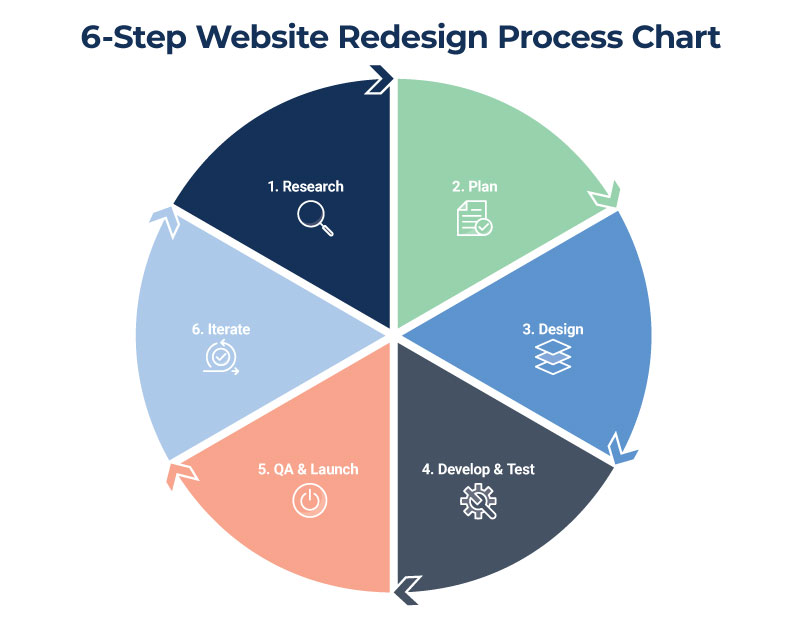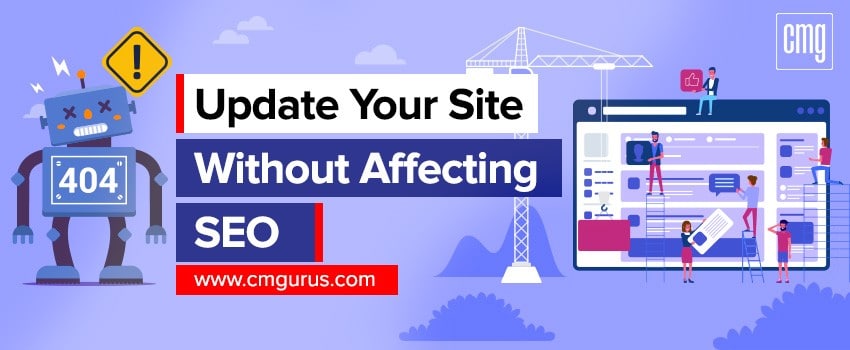Uncover the secrets to preserving your hard-earned SEO rankings while giving your website a much-needed makeover. Don’t miss out!

Image courtesy of via DALL-E 3
Table of Contents
- Introduction: Why Redesigning Your Website is Exciting!
- Understanding SEO
- Before You Begin: Plan Ahead
- Mapping Your Existing Content
- Retaining Your URL Structure
- Optimizing Your New Design for SEO
- Testing and Launching Your Redesigned Website
- Monitoring and Adjusting Post-Launch
- Conclusion: Enjoying Your New and Improved Website!
- Frequently Asked Questions (FAQs)
Introduction: Why Redesigning Your Website is Exciting!
Are you ready to give your website a brand-new look? Redesigning your website is like giving it a makeover, making it cooler, and attracting more visitors. Think of it as styling your hair differently or getting new clothes to show off your unique style online!
But hold on a second! While changing the design is super fun, we need to remember something really important. We can’t forget about SEO while we make these exciting changes. SEO is like a magic spell that helps people find your website on search engines like Google. So, while we’re having fun with the redesign, we must ensure that our SEO magic stays strong!
Understanding SEO
In the world of websites, SEO stands for Search Engine Optimization. But what does that really mean? Let’s break it down in simple terms that are easy to understand for everyone, especially for those of us who are just starting to explore the exciting world of website design.
What is SEO?
SEO is like a secret code that helps search engines like Google find your website among the billions of other websites out there. Imagine you have a treasure map, and the better the map is, the easier it is to find the hidden treasure. In this case, your website is the treasure, and SEO is the map that guides people to it!
Why SEO is Important
Now, you might be wondering, why is it crucial for people to find my website? Well, think about it this way – if you have a lemonade stand on a busy street with lots of customers passing by, you’ll sell more lemonade, right? SEO works the same way by bringing more visitors to your website, making it popular and successful!
Before You Begin: Plan Ahead
Planning is key when it comes to redesigning your website to ensure that everything goes smoothly. Before diving into the redesign process, take some time to plan ahead to make the transition easier and ensure that your website maintains its SEO ranking.

Image courtesy of www.igexsolutions.com via Google Images
Make a List
Start by making a list of what you want to change or improve on your website. This could include updating content, adding new features, or improving the overall design. By having a clear plan in place, you can stay organized and focused throughout the redesign process.
Do an SEO Audit
Before making any changes to your website, it’s important to conduct an SEO audit to assess how your site is currently performing. This will help you identify any areas that need improvement and ensure that you don’t lose any valuable SEO ranking during the redesign process. Tools like Google Analytics can help you see which keywords are driving traffic to your site and which pages are performing well.
Mapping Your Existing Content
Before you dive into the exciting world of redesigning your website, it’s essential to map out your existing content. This process ensures that you don’t lose any valuable information that could affect your SEO ranking. Let’s take a closer look at how to effectively map your content.
Create a Content Inventory
First things first, you need to create a content inventory. This simply means making a list of every piece of content available on your website. From blog posts and product pages to images and videos, it’s crucial to have a comprehensive list of all your content.
Identify High-Performing Content
Once you have your content inventory, the next step is to identify high-performing content. These are the pages that are doing well in search engines and driving traffic to your site. By pinpointing these pages, you can ensure that they remain optimized and continue to attract visitors even after the redesign.
Retaining Your URL Structure
In order to maintain your website’s visibility on search engines like Google after a redesign, it’s crucial to pay attention to your URL structure. URLs play a significant role in helping search engines understand the content and structure of your website. Here’s how you can ensure that your URLs are preserved or redirected correctly:

Image courtesy of www.smartsheet.com via Google Images
Why URLs Matter
URLs, or Uniform Resource Locators, serve as the addresses of individual pages on your website. They provide valuable information to search engines about the content of a specific page. By keeping your URL structure consistent or redirecting old URLs to new ones, you can maintain the indexing and ranking of your website on search engine results pages.
Using Redirects
When you redesign your website, some URLs may change to improve the overall user experience or reflect updated content. In this case, it’s essential to set up redirects from the old URLs to the new ones. Redirects act as signposts that guide both visitors and search engines to the new location of your content, ensuring that traffic and link equity are transferred seamlessly.
Optimizing Your New Design for SEO
When you’re giving your website a fresh new look, it’s not just about making it look cool; it’s also about ensuring that people can find it easily. Here are some tips to make sure your new design is search engine-friendly.
Mobile-Friendly Design
It’s essential to make sure that your website looks good and works well on phones and tablets. More and more people are using mobile devices to browse the internet, so having a responsive design is crucial for SEO. Search engines like Google prioritize mobile-friendly websites in their rankings, so you need to cater to mobile users to stay visible.
Fast Loading Speed
Having a website that loads quickly is not only important for user experience but also for SEO. Search engines favor fast-loading websites because they provide a better user experience. Visitors tend to leave a site that takes too long to load, which can increase your bounce rate and negatively affect your SEO rankings. Make sure your new design is optimized for speed by reducing image sizes, using efficient coding, and choosing a reliable hosting service.
Testing and Launching Your Redesigned Website
Before you show off your awesome new website to the world, it’s essential to make sure everything works perfectly. Let’s talk about testing and launching your redesigned website smoothly!

Image courtesy of www.cmgurus.com via Google Images
Test Everything
Testing is like checking your homework before submitting it—super important! You need to try every button, link, form, and feature on your new website to make sure they work as they should. It’s like making sure all your toys are in the toy box before inviting friends over to play. Testing helps you find any bugs or errors that need fixing before your website goes live.
Go Live Carefully
Launching your website is like hosting a big birthday party for your friends. You want everything to go smoothly! Before you make your website live, double-check all the details one last time. Make sure your domain and hosting are set up correctly. Test your website one more time to ensure all is well. It’s like doing a final check on your party decorations to make sure they’re perfect.
Monitoring and Adjusting Post-Launch
Once your newly redesigned website is live and running, the work doesn’t stop there! It’s important to keep an eye on how your website is performing to ensure that your SEO remains intact and your visitors are happy. Here are some tips on how to monitor and adjust your website post-launch:
Use Analytics
One of the best ways to track your website’s performance is by using tools like Google Analytics. By setting up Google Analytics on your website, you can see valuable data such as how many visitors you’re getting, where they’re coming from, which pages they’re spending the most time on, and much more. This information can help you understand your audience better and make informed decisions to improve your website’s SEO.
Make Necessary Changes
After monitoring your website’s performance through analytics, you may come across areas that need improvement. Whether it’s updating content, optimizing images, fixing broken links, or tweaking keywords, don’t be afraid to make necessary changes to enhance your website’s SEO. By being proactive and making adjustments as needed, you can ensure that your website continues to attract visitors and maintain a strong presence on search engines.
Conclusion: Enjoying Your New and Improved Website!
After all the hard work and careful planning, your new website is now live and looking better than ever! You’ve successfully redesigned your website while preserving its SEO, ensuring that it stays visible and ranks well on search engines. Let’s take a moment to celebrate your achievement and recap the key points that have led to this success.

Image courtesy of www.linkedin.com via Google Images
Embracing the Freshness
Your website now sports a sleek and modern design, making it more attractive to visitors. The new look has brought a sense of excitement and possibility, drawing in more users to explore what you have to offer. Remember, a fresh look can make a big difference in how your website is perceived!
SEO Success Story
By carefully planning and executing your website redesign with SEO in mind, you have ensured that your website remains visible and easily discoverable by your target audience. Keeping your SEO intact has allowed your website to maintain its ranking on search engines, driving more organic traffic and increasing your online presence.
With a beautifully redesigned website and preserved SEO, you are now set to enjoy the fruits of your labor. Your hard work and dedication have paid off, giving you a website that not only looks great but also performs well in the digital landscape.
So, go ahead and explore your new and improved website! Show it off to your friends, family, and anyone else who wants to see what you’ve created. Enjoy the success of your redesign and the positive impact it will have on your online presence. Congratulations on a job well done!
Frequently Asked Questions (FAQs)
What is the hardest part of redesigning a website?
Redesigning a website can be super fun, but sometimes it can be tricky too! One of the hardest parts is making sure everything looks just right. You have to think about colors, pictures, and where to put all the important information. It’s like solving a big puzzle, but don’t worry, with a little creativity and patience, you can make your website look awesome!
How long does it take to see SEO results?
Seeing the effects of good SEO on your website can be pretty exciting! But it’s important to remember that SEO is like planting seeds in a garden. It takes time for those seeds to grow into beautiful flowers. So, when you make changes to improve your SEO, it might take a few weeks or even months to see the results. Just be patient and keep working on making your website the best it can be!
Can I redesign my website by myself?
Yes, you can definitely redesign your website on your own! There are many tools and resources available online that can help you create a cool new design. However, sometimes redesigning a website can be a little tricky, especially when it comes to preserving SEO. If you’re not sure how to keep your SEO intact while redesigning, it might be a good idea to ask for help from a professional. They can make sure your website looks great and stays visible on search engines!







